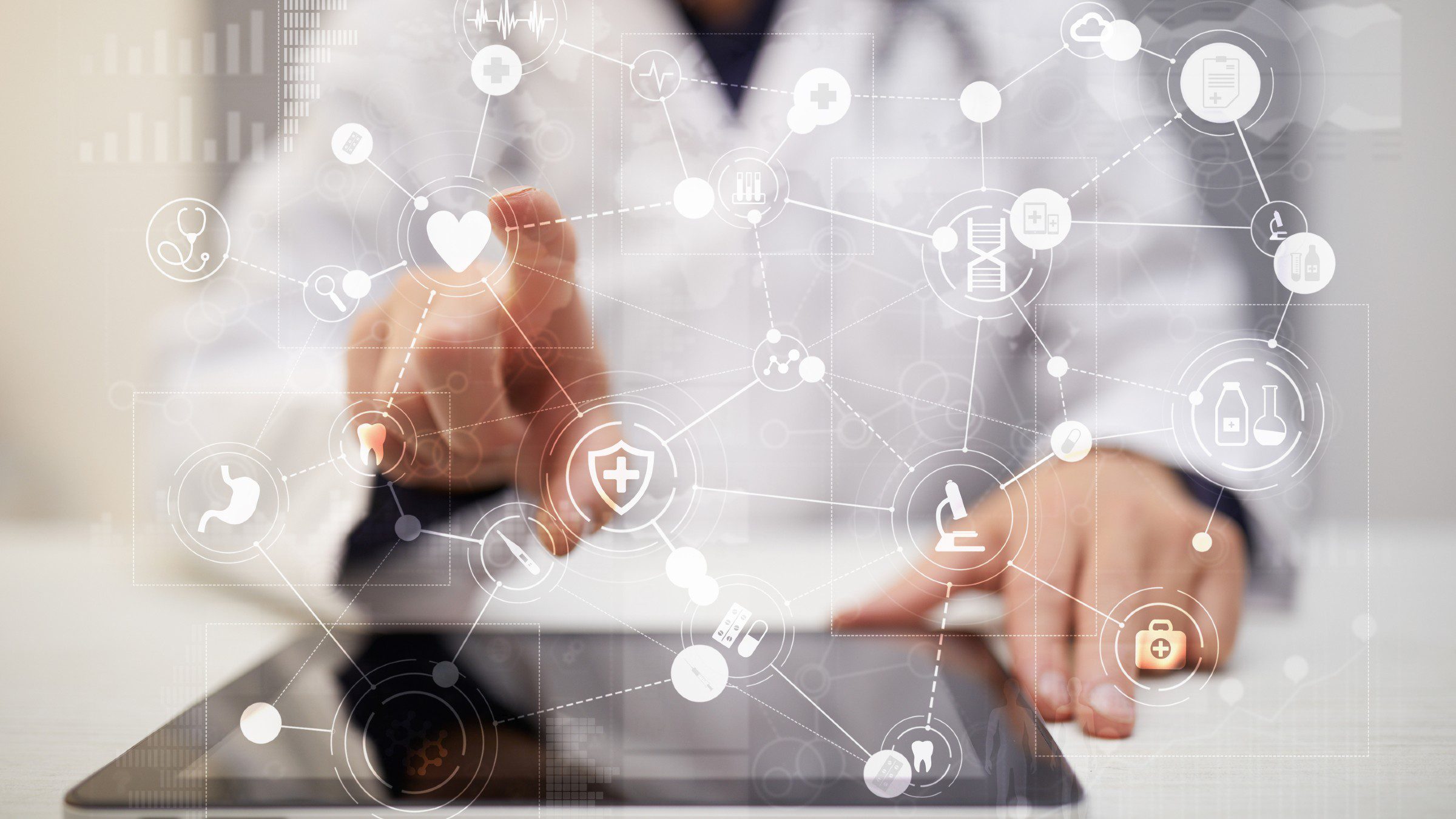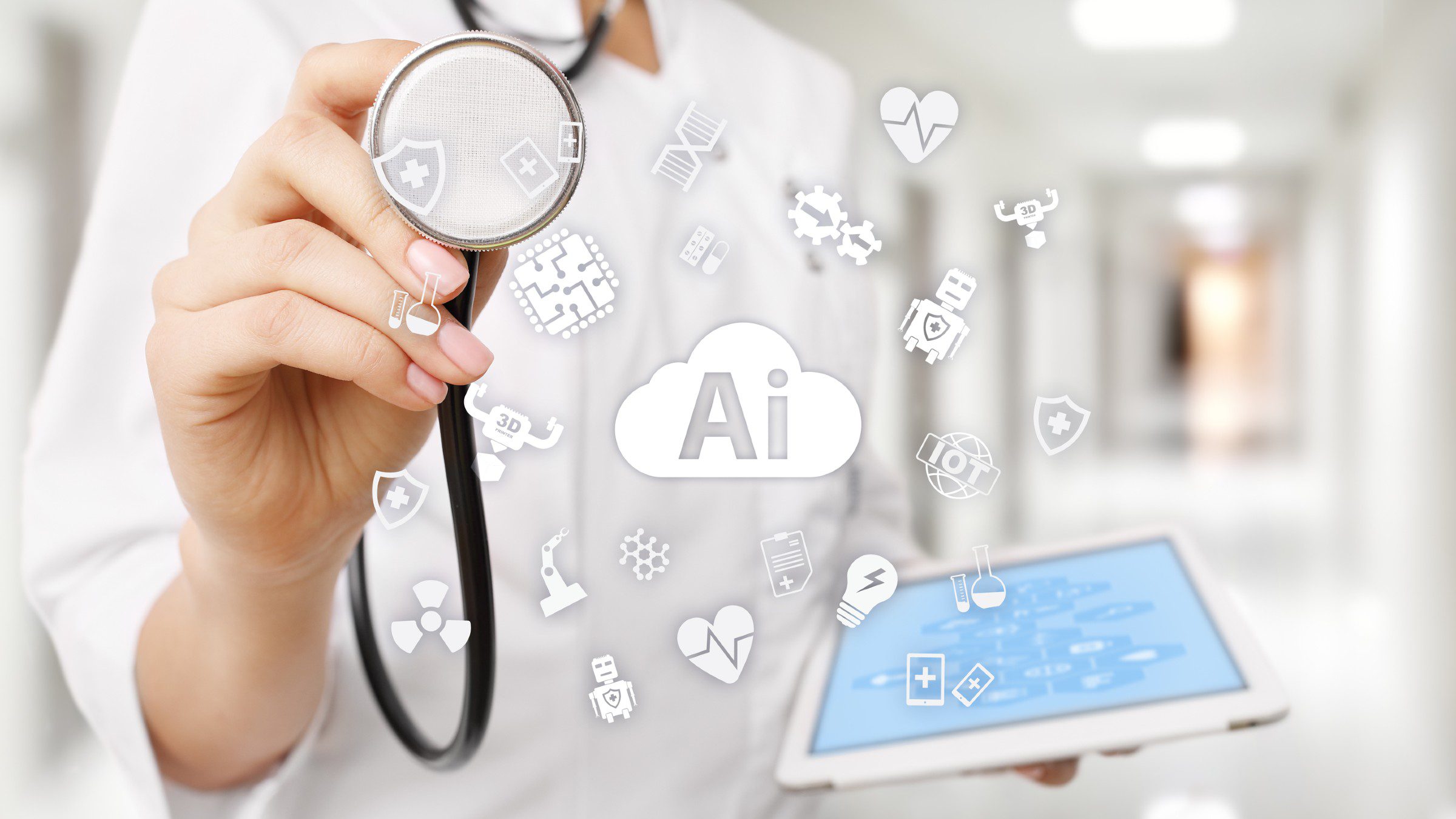1. Telemedicine and Remote Patient Monitoring
2. Artificial Intelligence and Machine Learning in Healthcare
3. Internet of Things (IoT) in Healthcare
4. Mobile Health (mHealth) Applications
Thank you for reaching out to Sigma Software!
Please fill the form below. Our team will contact you shortly.
Sigma Software has offices in multiple locations in Europe, Northern America, Asia, and Latin America.

USA

Sweden

Germany

Canada

Israel

Singapore

UAE

Australia

Austria

Ukraine

Poland

Argentina

Brazil

Bulgaria

Colombia

Czech Republic

Hungary

Mexico

Portugal

Romania

Uzbekistan
Healthcare software is evolving rapidly, making healthcare more accessible and efficient. This article explores practical trends such as remote patient monitoring and data management, that show how technology is simplifying patient care. Let's explore these innovations and their impact on healthcare.
1. Telemedicine and Remote Patient Monitoring
2. Artificial Intelligence and Machine Learning in Healthcare
3. Internet of Things (IoT) in Healthcare
4. Mobile Health (mHealth) Applications
In recent years, telemedicine and remote patient monitoring have emerged as pivotal components of healthcare, revolutionizing patient care through innovative software solutions. This shift has been particularly pronounced in the aftermath of the global pandemic, as healthcare providers seek more efficient and safer ways to deliver medical services.
Telemedicine offers a range of benefits that have significantly improved patient care. One of the most important benefits is the convenience it offers. Patients can consult with healthcare professionals from the comfort of their own homes, eliminating the need to travel and reducing waiting times. This convenience is particularly valuable for people with chronic conditions, mobility issues, or who live in remote areas where access to healthcare facilities is limited.

Additionally, telemedicine has proven to be a cost-effective alternative that reduces healthcare costs for both patients and providers. By enabling virtual consultations, unnecessary hospital visits can be minimized, optimizing resource allocation within healthcare systems. In addition, telemedicine improves the overall patient experience by fostering continuous communication between patients and healthcare providers, leading to improved outcomes and higher satisfaction rates.
Telemedicine covers a range of services, including virtual doctor visits, remote consultations, and online prescription services. Patients can seek medical advice, discuss symptoms, and receive prescriptions via secure video calls or messaging platforms.
In addition, telemedicine enables therapists and counselors to conduct remote therapy sessions, providing critical support for patients struggling with mental health issues.

For more insights on how thoughtful design enhances app effectiveness and ensures positive impact on users, explore our article:
Healthcare software development companies design platforms and mobile applications that enable seamless virtual consultations. These platforms often integrate secure messaging systems, video conferencing capabilities and access to electronic health records (EHR’s) to ensure comprehensive patient care. Developers are also focusing on enhancing the security features of these applications, ensuring patient confidentiality, and complying with healthcare privacy regulations.

For a deeper dive into the challenges and secure implementation of telemedicine software for remote care, check out our article:
Innovations in Telemedicine Software for Remote Care: Challenges and Ways to Implement Safely
Artificial Intelligence (AI) and Machine Learning (ML) have significantly transformed the healthcare landscape, offering streamlined solutions that improve patient care and optimize medical processes.
One of the key benefits of AI and ML in healthcare is their ability to process vast amounts of data quickly and accurately. These technologies can analyze complex medical data, including patient records, lab results, and imaging scans, to identify patterns and trends that might be beyond the scope of human capabilities. This data-driven approach enables healthcare professionals to make more informed decisions, leading to earlier and more accurate diagnoses.

Additionally, AI and ML algorithms can predict disease outbreaks, anticipate patient needs, and optimize hospital resources, leading to improved patient outcomes and reduced costs. By automating repetitive tasks, these technologies also free up the time of healthcare professionals, allowing them to focus on providing personalized patient care.
In healthcare, AI and ML are being used in a variety of ways. For instance, predictive analytics powered by these technologies can help identify patients at risk of certain conditions, allowing for preventive interventions. Natural Language Processing (NLP) algorithms are used to extract valuable insights from unstructured medical data, such as physician’s notes and research papers, facilitating evidence-based decision-making.
Moreover, AI-driven robotics assist in surgeries, enabling precision and minimizing risks. Machine Learning algorithms are also being used in personalized medicine, where treatments and medications are tailored to individual patients based on their genetic makeup and other factors.
Healthcare software development companies are accumulating robust algorithms and machine learning models that can accurately process and interpret medical data. Furthermore, these companies continuously refine these algorithms, using real-world feedback and data to improve their accuracy and reliability. They also focus on ensuring the security and privacy of patient data, adhering to strict regulatory standards to maintain the confidentiality of medical information.
The integration of Internet of Things (IoT) technology in healthcare has ushered in a new era of connectivity and efficiency, transforming patient care in remarkable ways.
IoT devices have enabled continuous and real-time monitoring of patients, allowing healthcare providers to collect vital data remotely. This constant stream of information improves early detection of health issues and ensures timely intervention, ultimately improving patient outcomes. IoT devices also empower patients to actively participate in their healthcare management, encouraging self-monitoring and healthier lifestyles.

Additionally, IoT facilitates efficient management of medical assets and inventory within healthcare facilities. Smart sensors can track the use and condition of medical equipment, ensuring timely maintenance and reducing downtime. This proactive approach leads to cost savings and ensures that critical resources are available when needed.
IoT devices in healthcare span a wide range, including wearable fitness trackers, smart glucose monitors, and connected medical implants. Wearable devices collect data on physical activity, heart rate and sleep patterns, providing valuable insights for both patients and healthcare professionals. Remote monitoring devices, such as blood pressure cuffs and glucose monitors, transmit real-time data to healthcare providers, enabling continuous monitoring of patients with chronic conditions.
In healthcare facilities, IoT technology is being used for asset tracking, temperature monitoring and equipment management. Smart refrigerators and storage units equipped with sensors ensure the proper storage of medicines and vaccines, maintaining their efficacy and safety.
Healthcare software development companies design intuitive mobile applications that allow patients to easily access and interpret their health data. These companies develop secure communication protocols to protect the transfer of sensitive patient information between devices and healthcare systems.
Moreover, software developers are creating data analytics platforms capable of processing the vast amounts of data generated by IoT devices. These platforms enable healthcare providers to derive meaningful insights, identify trends and make data-driven decisions, ultimately improving the quality of patient care.
Mobile Health (mHealth) applications have become indispensable tools in the healthcare landscape, offering unprecedented convenience, accessibility and personalized care to patients and healthcare professionals alike.
mHealth applications provide instant access to healthcare services and information, bridging the gap between patients and providers. One of the key benefits is the ability to facilitate remote consultations and virtual visits. Patients can consult with healthcare professionals via video calls, eliminating the need to travel and reducing waiting times. This real-time communication enables timely medical advice, prescriptions and follow-up, improving patient outcomes and satisfaction.

In addition, mHealth applications enable users to proactively monitor their health and wellness. These apps track vital signs, physical activity, diet and medication adherence, promoting healthier lifestyles and disease prevention. Patients with chronic conditions, such as diabetes or hypertension, can use personalized reminders and monitoring features to effectively manage their conditions and reduce the risk of complications.
mHealth applications address a wide range of healthcare needs. They provide educational resources, medication reminders, mental health support and fitness tracking functionalities. Patients can access reliable medical information, understand symptoms and make informed decisions about their health. Additionally, these apps support healthcare professionals by providing digital prescriptions, secure messaging and EHR integration, streamlining communication and improving collaboration between medical teams.
mHealth applications are also critical in the field of advanced prosthetics, offering specialized apps that allow users to calibrate, monitor and customize their smart prosthetic devices, ensuring seamless technology integration and increasing mobility and independence for people with limb loss.

Interested how mobile apps can enhance the functionality of prosthetic limbs? Discover how technology is revolutionizing assistive devices for a more seamless user experience:
The Role of Mobile Apps in Enhancing Prosthetic Limb Functionality
Companies providing healthcare software development services focus on developing cross-platform applications that are compatible with various devices, including smartphones and tablets, to maximize the reach and accessibility of mHealth services.
In addition, custom healthcare software development companies prioritize data security and privacy, implementing encryption methods to protect patient information. They also integrate APIs and third-party services to enhance app functionality, such as integrating wearable devices for real-time health monitoring. Regular updates and maintenance are crucial to ensure that mHealth applications remain compatible with evolving mobile technologies and operating systems and provide uninterrupted services to users.
Cloud computing and advanced data management solutions have emerged as key tools in healthcare, providing secure, efficient and accessible ways to store, manage, and share vast amounts of medical data.
One of the key benefits is the scalability of cloud solutions. Healthcare providers can store large volumes of patient records, medical images and research data without being constrained by physical storage limitations. Cloud-based systems also improve data accessibility, allowing authorized healthcare professionals to securely access patient information from anywhere, fostering seamless collaboration, and improving the speed and accuracy of diagnosis and treatment.

In addition, cloud computing and advanced data management streamline administrative tasks. Electronic Health Records (EHRs) and administrative databases stored in the cloud simplify scheduling, billing and claims processing. This automation reduces paperwork, minimizes errors, and optimizes the overall efficiency of healthcare operations.
In healthcare, cloud computing is used to store and manage vast amounts of data, including patient records, medical images, and genomic data. These cloud-based repositories are accessible in real time, giving healthcare providers instant access to critical patient information, leading to faster decision-making and more accurate diagnoses. Cloud solutions also facilitate the secure exchange of medical data between different healthcare institutions, ensuring coordinated and collaborative care for patients.
Advanced data management solutions play an important role in data analysis and research. Healthcare organizations use sophisticated algorithms to analyze large data sets, identify patterns, and derive meaningful insights. These insights inform medical research, treatment strategies, and healthcare policy, driving advances in patient care and medical practice.
Healthcare software development companies design platforms with robust security measures, including encryption and multi-factor authentication, to protect patient data, and ensure compliance with healthcare regulations such as HIPAA.
In addition, custom healthcare software development can create advanced data analytics tools that can efficiently process large and diverse datasets. These tools provide healthcare professionals with actionable insights, enabling evidence-based decision making and personalized patient care. Regular updates and maintenance by healthcare software development companies ensure the reliability, security and performance of cloud-based healthcare systems, guaranteeing uninterrupted access to critical medical data.
Healthcare software development is driving significant improvements in patient care. Through trends like remote monitoring, data management, and innovative technologies such as AI and IoT, healthcare has become more accessible and personalized. These advancements are not just trends; they represent a fundamental shift in the way healthcare is delivered. By embracing these solutions, healthcare providers can increase efficiency, improve outcomes and deliver a higher quality of care to patients. The ongoing evolution of healthcare software points to a promising future where technology will continue to play a pivotal role in shaping the healthcare experience for everyone involved.

Andrii's expertise primarily encompasses the Healthcare industry. Bolstered by extensive knowledge in the Information Security domain and ML/AI. Andrii Pastushok is committed to guaranteeing clients receive an exceptional product development experience.
Linkedin profile1. Telemedicine and Remote Patient Monitoring
2. Artificial Intelligence and Machine Learning in Healthcare
3. Internet of Things (IoT) in Healthcare
4. Mobile Health (mHealth) Applications


A Software Bill of Materials (SBOM) is becoming one of the most important documents in modern software development. Still, many organizations struggle to create...

As cloud sovereignty becomes a strategic priority across the EU, Sigma Software applies its deep expertise and extensive experience to contribute to the develop...

Data is everywhere, yet its payoff isn't always there. Many IT leaders struggle with scattered analytics, rising storage costs, and unclear returns.We face...
Would you like to view the site in German?
Switch to German